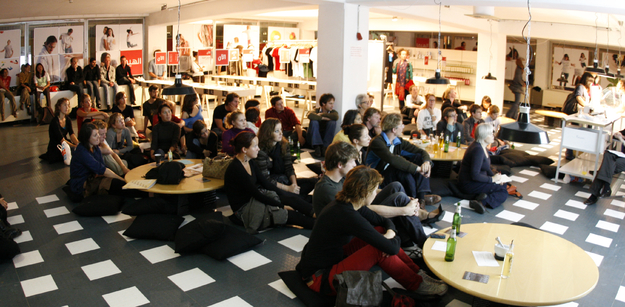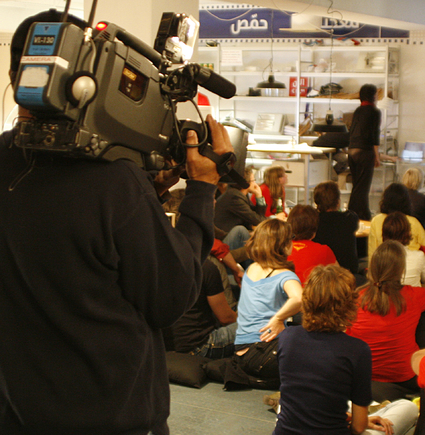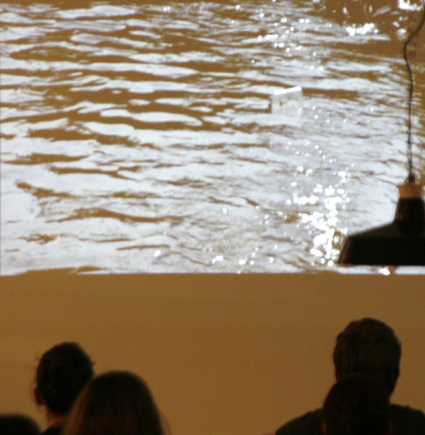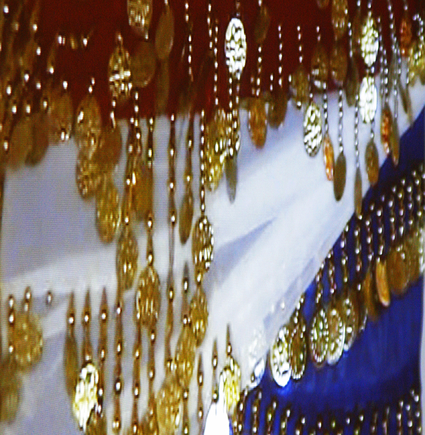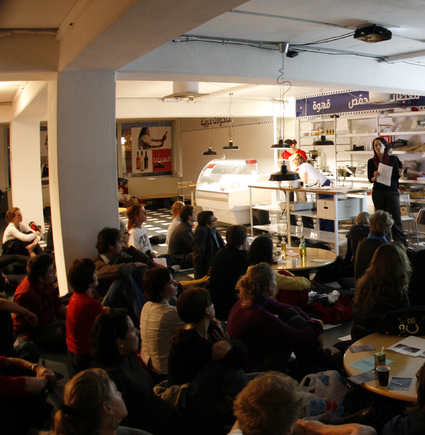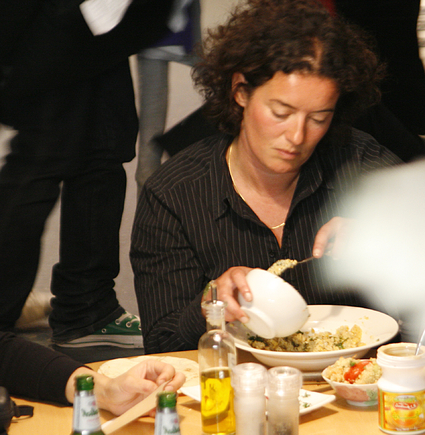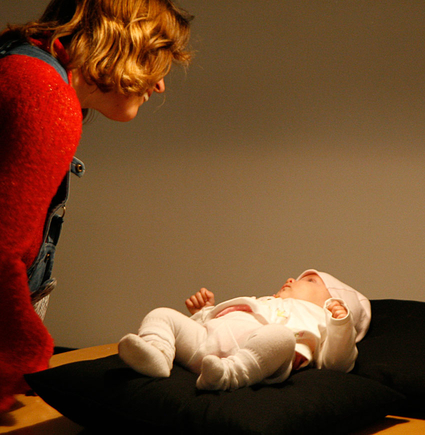In their introduction to the project Silke and Christine wrote: [T]he films reflect a complex and often misunderstood Arab world, torn by internal conflict. The result of cultural amalgamation rooted in history, this region is constantly in search of new definitions…[u]sing images to lead the narrative, each artist, no matter the style or medium, succeeds in raising fundamental questions relating to humanity, politics, and aesthetics.
The films were introduced by independent curator Nat Muller.
El HEMA Koopavond 10: Resistance[s] at Mediamatic - Allahu Akbar by Iraki artist Usama Alshaibi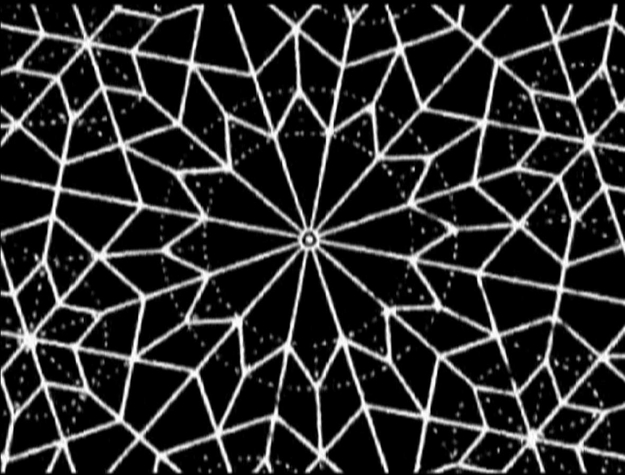
The Films
TRANSIT, Taysir Batniji (PS), 8’, 2004.
The video Transit by Taysir Batniji tackles the issues of borders. The Palestinian artist presents a silent slideshow, made up of photographic images, that he made clandestinely at border passages between Egypt and Gaza. The photographs of people waiting are alternated with black screens, metaphors for emptiness and the passing of time, reflecting the difficult and often impossible conditions of mobility for today's Palestinians. The video addresses notions of travel and displacement as well as the situation of being between two cultures and identities.
ALAHU AKBAR, Usama Alshaibi (IQ), 5’10”, 2003.
Allahu Akbar is based on ancient Islamic Allover patterns that are used for various artistic ornamentation in Arab culture. In Islam it is forbidden to have depictions of God or the Prophet. Complex geometrical patterns are used to praise the perfection of God in nature. Alshaibi’s Father brought him a book of these hand drawn Islamic patterns. These beautiful and intricate designs were on this brown newsprint, it looked like a book a craft-person would use, almost like a blueprint. He took these images, scanned them, cleaned them up and started animating them. New images emerged and created an entirely different way of viewing these traditionally static designs. Allahu Akbar attempts to come closer to that ultimate beauty and mystery which is God.
DANSONS, Zoulika Bouabdellah (DZ), 5’, 2003.
The dancer puts on fabrics in the colour of the French flag and belly dances to the French national anthem.
SAVING FACE, Jalal Toufic (LB), 9’, 2003.
Were all the candidates' faces posted on the walls of Lebanon during the parliamentary campaign of 2000, waiting for the results of the elections? No. As faces, they were waiting to be saved. Far better than any surgical facelift or digital retouching, it was the physical removal of part of the poster of the face of one candidate so that the face of another candidate would partially appear under it; as well as the accretions of posters and photographs over each other that produced the most effective facelift, and that proved a successful face-saver for all concerned.
BEFORE VANISHING, Joude Gorani (SY), 13’, 2005.
In Before Vanishing, filmmaker Joude Gorani travels from the beginning to the end of the Barada river, which surrounds the capital of Damascus. Often deemed iconic of nature's wondrous beauty, we discover how the Barada river has suffered from exploitation, neglect, pollution and unplanned urbanization. The film also uncovers the transformation of the river's social life and provides an intelligent measure of the distance between ideology and reality, in contemporary Syria.
